Avro "Volcano" strategic bomber
This magnificent machine, whose contours today still look quite modern, can certainly be attributed to the most “revolutionary” aircraft of its time. "Volcano" - one of the world's first production jet aircraft, made under the "flying wing".
Work on the creation of a new long-range bomber for the British Air Force began at Avro in the winter of 1947 under the supervision of Chief Designer R. Chadwick. Just like the other machine of the V-series - Handle and Page "Victor" - the Avro aircraft was supposed to meet the requirements. In 35 / 46 the headquarters of the British Air Force launched by 9 on January 1947. It was supposed to create a high-altitude bomber capable of operating from ordinary British airfields (unlike the “spacious” America and Russia, the small island could not afford to build many huge runways: after all, by the end of the Second World War, airfields accounted for 1% of the total area of England). Powerful bomb armament of the new aircraft in order to reduce aerodynamic drag should be placed only in the high-capacity bomb bay (external suspension assemblies were not provided). Maximum take-off weight was limited to 100 000 pounds (45 360 kg). The basis of the tactical concept of the new bomber was to be a combination of high subsonic speed and ceiling with high maneuverability at high altitudes, which would avoid the use of defensive machine-gun and cannon armament.
By the time the Avro company began to work on the new bomber, the German trophy materials on high-velocity aerodynamics, which were widely used in shaping the look of the new car, were already at their disposal (in this respect, the Avro looked somewhat less patriotic than its the competitor, Handley Page, which relied to a greater extent on the results of national research in their work).
Initially, the layout of a bomber, made according to the normal aerodynamic configuration and equipped with a wing with a large sweep angle (45 ° in 1 / 4 chords), was considered. However, with this configuration, it was not possible to meet the specified limits on mass and speed. It was decided to abandon the horizontal tail and somewhat shorten the fuselage. The next stage of evolution led to the appearance of a tailless arrangement with a triangular wing of a thick profile and a relatively small elongation (2,4), which was adopted as a basis. The triangular wing provided sufficient capacity to accommodate the engines, chassis and fuel while maintaining high aerodynamic characteristics. A large wing area reduced the specific load, thus achieving excellent height and maneuverability characteristics of the machine. In addition, acceptable take-off and landing characteristics (a task that was a constant headache of the designers of the first jet bombers) remained.
In March 1947, preliminary studies of the new aircraft project, which lasted for two months, were completed, and in May of that year, Avro entered the UK Department of Supply, which was responsible for creating aviation equipment, with a proposal to build a bomber, received the designation "type 689". At the same time, the company made and demonstrated to senior government and military officials a model of a new car that had a very exotic appearance for its time: a layout close to the “flying wing”, two round air intakes on the sides of the thick fuselage, two relatively on the ends of the delta wing small keel with rudders.
At a meeting at the Ministry of Supply, held on November 27, 1947, after a lengthy debate, Avro’s offers received final approval, which allowed the company to start full-scale work to build the aircraft. It can be assumed that the decision to build a new bomber was made not without the influence of Northrop's American works on the XB-35 and YB-49 bomber, which also had a “flying wing” scheme. However, if at high speeds the characteristics of the delta wing were theoretically enough studied in theory, then it was unacceptably little how the delta would behave at low speeds during takeoff and landing. Therefore, simultaneously with the decision to finance the creation of a “large” aircraft, it was decided to build an aerodynamically similar small analog aircraft equipped with a turbojet engine (initially it was proposed to also produce an experimental glider without a power plant).
During the further design of the 698, the airframe configuration was somewhat revised: the vertical keels became all-turning, the air intakes turned from round to oval, which somewhat improved the view to the side (this was mainly due to the desire to provide visual monitoring of the position of the full-turning keels from the pilot's cabin); in addition, the wing angle was changed. In September 1948, the company made a new model of the bomber with all the improvements listed.
During 1948, a large amount of testing was carried out in wind tunnels: the full model of the bomber and its half-model (i.e. the model of the aircraft, as if cut in half by a vertical plane) were blown through the high-speed ADT of the Royal Research Aviation Institute (RAE). In the low velocity tube, a full model with air intakes was investigated. Avro's low-speed ADT was also used to test the model of an aircraft without air intakes. Finally, studies were carried out in the wind tunnel of the National Physical Laboratory in a wider range of Re numbers than in other ADTs. In the end, the RAE was designed wing, the aerodynamic characteristics of which corresponded to the crescent wing, used on the plane "Victor", but, unlike the latter, due to the triangular shape had a larger internal volume and a simpler design.
Simultaneously with the creation of the bomber, the aircraft design was carried out, analogue, received the designation "type 707", which was a reduced copy of "type 698" three times. The power plant of the analog consisted of one TRD Rolls-Royce "Dervent" (1 x 1630 kgf) installed in the rear fuselage. The air intake was located above the fuselage. The first flight of “707” was held on 4 on September 1949, however, after the fifth flight, as a result of electrical problems, the car crashed and was completely destroyed. 6 September 1950. An experienced 707В aircraft flew into the air, which had insignificant differences from the first aircraft. One of the features of the scheme with a triangular wing, which was identified during the testing of this machine, was the late separation of the nose wheel during takeoff, when the speed was approaching takeoff. This led to a sharp "uplift" of the machine. The problem was resolved by lengthening the nose strut, which led to an increase in the angle of attack during takeoff (if there were no 707В aircraft, the costly work of remaking the bomber chassis design would be required). "707В" for two years performed 380 flights, having flown a total of 130 h.
The need for further research on the behavior of the delta wing at high speeds, as well as the need to check "in" the configuration of air intakes, finally determined only in February 1951, after the series of tests in wind tunnels, led to the appearance of the third aircraft-analogue "XNUMHA" provided with an air intake in the root of the wing. This car took to the air in July 707 (the car performed 1951 flights, flying in 197 hours). Finally, 92 July 1 took off the last, fourth equivalent - “1953”, close to the plane “707”, but had a double cabin with a double control. The main purpose of the vehicle was to prepare the pilots for flights on cars with a delta wing.
Even after the start of flight tests of a “large” aircraft, experimental analogue planes did not lose their value, since they made it possible to obtain the necessary data faster and at lower costs. Another merit of the miniature "Vulcan" was that their successful flights, widely reported in the British press, finally convinced skeptics from the Ministry of Supply and Air Force (and in the Avro company itself) of the correctness of the chosen aerodynamic scheme.
The technical design of the 698 was basically completed in the autumn of 1949. The appearance of the bomber has changed significantly since the original design. Instead of two swiveling keels, it was decided to install one keel of the usual type, the air intakes “drowned” in the leading edge of the wing, increased compared to the original calculated weight of the airframe. The construction of the first vehicle, the VX-770, began in April of 1950. Its first flight took place on August 30 1952 at the Avro airfield near Woodford. Since the Olimp engines designed for the new bomber were not yet ready, the aircraft was equipped with four Rolls-Royce Evon RA3 TRDs (4 x 2950 kgf). To accelerate the start of testing, an experimental machine was equipped with a simplified fuel system with a fuel tank located in the bomb bay. Soon, the Royal Air Force assigned the name "Vulcan" to the 698 aircraft.
For the first six months, the aircraft was used mainly to evaluate controllability at high altitudes. After performing 32 test flights on the Vulcan, new Armstrong Sidley Sapphire (Sa6) engines were installed with 3640 kgf thrust, as well as a number of other systems and equipment that were “late” to the beginning of the first flight test phase. The flights of the modified aircraft were resumed in July 1953. In the same month, the technical design of the “full-scale” Vulcan bomber Mk.1 began. September 3 1953. The second Vulcan prototype, the VX-777, took off from the Bristol 0-100 TRD (4 x 4300 kgf). However, on July 27 1954, he crashed while landing at the Farnborough aerodrome. In the process of repair, the “regular” engines that had arrived in time by the time — the TRD “Olymp-101” —have come to their senses; moreover, they slightly increased the airframe design.
In July, the 1955 aircraft VX-777 was again upgraded: during its tests, as well as flights experienced aircraft series «707», it was found that when maneuvering at high altitude there is a buffering. Further studies have shown that the buffing mode is close to the estimated cruising mode of the Vulkan mass-produced aircraft with more powerful engines. As a result, the wing of the prototype plane had to be reworked: an influx was made with a maximum increase in the chord by 20% (the sweep angle was 52 ° in the root, 42 ° in the middle and 56 ° in the terminal), which reduced the ratio of Su from 1,56 to 1,3 and significantly move the start line of the buffalo to the angle of attack.
The first production bomber "Vulkan" In the Mk.1 took off in February 1955. The aircraft was installed TRD "Olympus-100" and a wing with a straight leading edge, identical to the wing of an experienced aircraft VX-770. However, after carrying out a series of tests, in November 1955, the car rose for revision, after which it received a new wing (as on the modernized VX-777), the Olimp-U2 engines (later replaced by the Olimp-104), automatic system increase stability and on-board radar H2S. The subsequent serial cars left their gates of the assembly shop already with a modernized wing and “regular” avionics. On the third serial bomber, the wing toe was slightly modified and the fuel tank filling system was installed with neutral gas. The fourth aircraft had a full set of weapons, on which it passed the main complex of flight tests. 29 May 1965 bomber received a certificate of airworthiness. A total of 45 Vulkan aircraft were built in the Mk.1.
The Vulcans began to enter service in September 1956, the first squadron, equipped with new bomber, reached its operational status in the summer of 1957. Thus, from the beginning of the program to supplying the bomber to the troops, it took 8,5 years (for B- 52 this period was 9 years, and for Tu-16 - 6 years). Avro’s new aircraft, along with Handley Page’s Victor aircraft, were by then probably the most advanced medium bomber in the world.
They were superior to the Tu-16 and Botoing B-47 “Stratodzhet” in practical ceiling, range and maneuverability at high altitude, ahead of B-47 also in speed characteristics. When M = 0,8, the aerodynamic layout of the Vulcan on the 8-10% had a higher level of perfection than the layout of the B-47 aircraft. The level of weight perfection of the Vulkan also exceeded the level of the B-47, which provided the aircraft with a greater range (in this parameter, the Vulcan is quite comparable with such modern machines as the Lockheed L-1011 and Airbus A-300-600). However, this was achieved not only due to the high degree of perfection of aerodynamics and powerplant, but, to a large extent, as a result of the complete abandonment of defensive cannon armament, which seemed to be somewhat premature for the mid-1950-s.
In 1958, the Volcanoes squadrons (for the first time in Great Britain) received the Free-falling Yellowusan fusion bombs.
In October, several volcano bombers visited 1957 in the United States, where they took part in competitions on the accuracy of navigation and bombing conducted among crews of strategic bombers in the United States and Great Britain. There, for the first time, one very important advantage of an English bomber was revealed, distinguishing it favorably from American aircraft of a similar class. "Volcano" - "flying wing" with recessed engines, relatively small keel, almost complete absence of right angles in the glider, working as corner reflectors, as well as an aerodynamically clean, well "licked" surface, covered with a thick layer of excellent paint, under which the heads rivets, turned out to be relatively unnoticeable for radars (American operators, accustomed to very solid EPR of strategic aviation command planes - B-36, B-47 and B-52, - initially took the mark from “Vulk on "on their radar screens for a mark of the destroyer). Perhaps this to some extent contributed to the awakening of the interest of the US Air Force to measures to reduce the radar signature of the aircraft, later named Stealth technology.
With some delay compared with the richer ones, the USSR and the USA in Great Britain began work on equipping long-range bombers with air-to-air guided missiles (pilot launches of the Blue Steel missiles from the Vulcan plane. The X.UMNXX were made at Woomera Australia). The British also considered an alternative option - equipping the "Volcanoes" instead of the missiles with three miniature Folland "Nat" fighters on the external suspension (two under the wing and one under the fuselage). Fighters had to deliver high-precision strikes against targets with small-sized nuclear ammunition, after which they would independently return to their airfields. However, the British lack of experience with linkage planes, the failure of similar American programs, as well as the rapid progress of the missiles, led to the abandonment of the idea of this “engraved” link of Vakhmistrov.
In 1960-1963 all “Volcanoes” in the Mk.1 received a new active and passive equipment of REP (after which the machines were renamed “Vulkan” in the Mk.1 A).
The results of the flight tests of the Vulkan aircraft indicated that in order to more fully utilize the potential of the prospective TRV Olympus V016, a further increase in the wing area of the aircraft is required. As a result, at the end of 1955, the company began to develop a new modification of the bomber, "Vulkan" In the Mk.2. For testing the wing of the new aircraft, the old “workhorse” was used again - the prototype VX-777, which received in August 1957 the third wing in its “life” (advanced avionics for Vulcan). The X. 2 worked out in 1958-1960 on another prototype - VX-770).
The first aircraft "Vulkan" In the Mk.2 was built in July 1958 g. His wing had a noticeable taper twist. The trailing edge, starting from the middle of the half-span, was given a small sweep, the elongation increased from 2,78 to 3,1. Instead of separate ailerons and elevators, elevons were used. In addition to the new wing and turbojet engine, the aircraft had an elongated tail section of the fuselage with additional equipment (in particular, REB equipment), an improved electrical system, a reinforced chassis and air intakes of increased area (which was caused by increased specific air consumption of the new engines). In the front of the royal air force bomber began to arrive in the summer of 1960.
The armament of the new Vulcan was the Blue Steel cruise missile or its modification, the Blue Steel Mk.1, suspended under the fuselage. However, these missiles, equipped with a capricious and complex rocket engine, had insufficient range, speed and accuracy of hitting the target and were considered as a temporary measure, until they entered service weapons. In the future, the aircraft was planned to be equipped with two US aviation ballistic missiles (ADB) GAM-87A Sky Bolt, created with 1956, to arm both US bombers and NATO allied aircraft. The ADB had two stages, a solid fuel engine, a monoblock warhead with an 2 Mt capacity, a maximum launch range of up to 1600 km, and a starting mass of 5100 kg.
However, despite initial successes, in December 1962, the work on the ADB Skybolt was unexpectedly curtailed: the new leadership of the US Department of Defense considered that this class of aviation weapons did not fully meet the “cost-effectiveness” criterion. As a result, the British Air Force remained without promising missile weapons.
The Blue Steel missiles remained the “main caliber” of the “Volcanoes” until 1970. After the arming of the British fleet nuclear submarines with ballistic missiles "Polaris" A3, the UK long-range bomber aircraft increasingly began to reorient themselves toward solving operational-tactical problems in the European theater of operations. Bombers "Volcano", again equipped with nuclear free-falling bombs, began to develop flights at low altitudes. This was reflected in the color of the aircraft: instead of a white shiny anti-nuclear coating in 1979, the bombers were covered with spotty gray-green camouflage. Somewhat later, a thimble appeared in the nose of the aircraft - a radar of the envelope system of the terrain (information about the contours in front of the lying area was displayed on an indicator in the cockpit). In addition to nuclear bombs, the Vulcan crews began to master low-altitude bombing with conventional free-falling bombs (the aircraft was capable of carrying up to 21 bombs of 450 kg caliber).
In the course of the Anglo-Argentine 1982 conflict, six Vulcan bombers In the MK.2, they were converted into Vulcan refueling aircraft to the MK.2: the machines were equipped with a single hose-cone sub-vehicle refueling unit. At the same time, several airplanes were equipped with Shrike anti-radar missiles (four SDs were suspended on under-wing launchers (PU), in the manufacture of which elements of PU were used that were created in their time for Skybolt missiles.
The Falklands conflict was the "swan song" of "Volcanoes": December 21 1982. The last squadron of these bombers was removed from service. Great Britain, not as rich as the United States and the USSR, could not afford to maintain a strategic “dyad” and completely abandoned long-range bombers.
During the period of operation, seven “Volcanoes” were lost as a result of accidents and catastrophes - more than other V-series aircraft.
DESIGN. The aircraft "Volcano" is made according to the "flying wing" scheme, equipped with four TDP and three-bearing landing gear. Unlike other heavy bombers, it was possible to abandon the expensive monolithic structures and cladding with a variable section. Apart from a small number of parts manufactured by machining, casting and forging, as well as laminated structures, the use of which is limited mainly to control surfaces and manhole covers, the entire airframe is made of ordinary sheet material and other semi-finished products from light alloys. Almost all parts of the aircraft were manufactured at Avro’s factories.
Wing ("Volcano" In Mk.2) - in terms of close to triangular. The sweep angle on the leading edge in the root part is 52 °, in the middle part - 52 ° and in the end part - 56 °. The wing of the aircraft "Volcano" In the Mc.2 has an increased scope and sweep along the trailing edge. Wing extension (Mk.1) 2,75, narrowing 10. The relative thickness of the root 12,5, at the ends - 5-6%. The angle of the transverse V is negative. In places of sagging the nose of the wing has a sharp leading edge and is deflected downwards.
Wing design - two-spar. The location of the side members is parallel to the front edge of the wing root (front side member) and the axis of the hinge of the control surfaces (rear side member). Ribs perpendicular to the rear spar.
The ailerons are mounted on the end portions of the wing, the elevators between them and the center section (aileron and elevator consist of two sections with separate control of each section. The area of the elevators 20 and 2, ailerons - 10 and 2. Air brakes of eight rectangular panels are arranged in pairs on the upper and lower surfaces of the wing on two sliding brackets. Their efficiency is quite high: with the full release of the brakes, the resistance of the aircraft increases 2,5 times. With the brakes open, between the wing and the edge of the brake panels form gaps.The height of the panels and their installation angle may vary. The maximum deflection angle of the brakes is 90 °.
On the upper surface of the wing in front of the line of possible separation of the boundary layer, 36 flow turbulators are installed. On the lower surface of the wing there are removable panels that facilitate access to the engines.
The fuselage has a circular cross section with a constant diameter (about 3 m) at a considerable length. The length of the fuselage 29,8 m, elongation - 10.
In the bow, in front of the cockpit, is a compartment of the onboard radar. Under the cabin there is an optical bomber sight blister and an access hatch. Bomb compartment length 8,5 m is located in the middle of the aircraft between the inner wing ribs, forming its walls. The main load from the weapon is transmitted by transverse elements of the arched type. The fuselage ends with a tail guard radar compartment, the antenna of which is covered with a radio transparent fairing. At the bottom of the rear fuselage, under the rudder, there is a container of a brake parachute.
CHARACTERISTICS OF THE VOLCAN BOMBER
Type of aircraft e | Volcano "In Mk.1 | "Volcano" in MK.2 |
Wingspan, м | 30,15 | 33,83 |
Aircraft length м | 29,61 | 30,45 |
Aircraft height м | 7,93 | 8,28 |
Wing area m2 | 340,00 | 368,30 |
Mass of empty kg | — | — |
Mass of fuel kg | — | — |
Target load mass kg | 9500 | 9500 |
Normal take-off weight kg | 86 000 | 86 000 |
Maximum take-off weight kg | 91 000 | 105 000 |
Maximum speed km / h | 980 | 1100 |
Practical ceiling м | 16 000 | 17 000 |
Normal range km | ||
(with 4500 kg bombs) | — | 9200 |
Maximum range km | 9000 | 11 600 |
Combat radius without | ||
refueling in the air,km | 3700 | 4500 |
Required runway length m: | ||
at normal take-off mass | 1830 | 1830 |
at maximum take-off mass | 2100 | 3050 |
Maximum operational | ||
overload | 2,63 | 2,63 |
The crew consisting of five people (two pilots, navigator-scorer, navigator and officer REP) is housed in a single sealed cockpit, the layout of which is close to the layout of the Vickers-plane cockpit. To use the optical sight navigator-scorer moves to the blister installed in the bottom of the fuselage. The pilots are equipped with ejection seats (before the ejection, as well as on the “Valiant”, the cockpit cannon must be completely shot off). The rest of the crew, sitting behind and below the pilots with their backs in the direction of flight, do not have ejection seats and in the event of an accident are thrown out through the entrance hatch. To observe the rear hemisphere there are special hopper devices.
Vertical plumage is arrow-shaped, trapezoid in shape. The relative thickness of the root profile is 12,5%. The area of the tail is 23,7 m2, the rudder is 6,0 m2.
Chassis tricycle. Carts of the main chassis - eight-wheeled, with liquid damping. Racks are made of magnesium-zirconium alloy. All 16 wheels are equipped with automatic braking.
Front two-wheeled trolley, controlled.
POWER POINT. The aircraft "Vulcan" B.MkI was equipped with four TRD Bristol "Olympus 102" (4 x 5450 kgf) or Olympus 104 (4 x 5900 kgf). On the Vulkan V.Mk2 bomber, the Olympus 21 MK.301 TRD (4 x 7710 kgf) with specific fuel consumption 0,8 kg / kg.ch was installed. Like other V-series bombers, as well as Tu-16 and M-4 aircraft, the engines are recessed in the wing. Such a layout improves the aerodynamics of the aircraft, improves weight perfection (compared to engines on pylons, like in Americans), but leads to operational difficulties. In addition, it is almost impossible to install on the plane of new engines with modified dimensions and other specific air flow. Each TRD is located in a separate fire-insulated compartment. The air intake, common to two engines, is separated by a partition at some distance from the leading edge. Between the air intake and the fuselage there is a boundary layer removal system.
Fuel tanks are located in the wing and fuselage.
AIRCRAFT SYSTEMS. Control system - booster. The steering system has a yaw damper.
Anti-icing system - thermal. The first and second pilots are equipped with ejection seats Martin-Baker Mk.ZK or KS (minimum height of ejection - 75 m).
TARGET EQUIPMENT ("Volcano" in the Mk.2). Panoramic Bomber Radar H2S; riflescope T.4; Bomber computer NBC Mk.2; Doppler navigation radar ARI 5851; the defendant ARI 5848 radio friend-to-alien system of the Mk.10; instrumentation ARI 18011 instrument landing system; VHF and HF radios ARI 18124 and ARI 5874.
Electronic countermeasures include the ARI 18105 radar reconnaissance station, the ARI 58000 radar warning station, the ARI 18076, ARI 18075 and ARI 18105 radar transmitters, as well as the passive interference spread device (dipole reflectors).
ARMAMENT. Bomb load weighing up to 9500 kg (normal - 4500 kg), including up to 21 free-fall bombs caliber 450 kg.
One SD "Blue Steel" Mk.1 or Mk.1 A, half-submerged under the fuselage.
Part of the aircraft that took part in hostilities in the Falkland (Malvinas) Islands was armed with AGM-45 Shrike anti-radar missiles on two underwing assemblies.
MILITARY APPLICATION. Admission to the armament of the Royal Air Force bomber "U" -series indirectly entailed a change in the entire "prestige rating" of service in various branches of the British armed forces. If before the most aristocratic and closed was the caste of naval officers, especially officers who served on battleships - the stronghold of the military power of the empire, then the army went and the pilots smelled of gasoline, casually dressed public, “frivolous people, not gentlemen” closed the “table of ranks” then after the swift, like the collapse of the British Empire itself, the fall of the combat role of the linear fleet (the last English battleship - Vanguard) - was towed to the scoop for cutting into metal in 1960), the basis of the strategic military relics of the United Kingdom began to make long-range bombers - aircraft "V" -series, armed with nuclear weapons.
Once the heart of a true British was filled with pride at the sight of the gray armored communities of the Grand Fleet, frozen in the Scapa Flow roadstead, now their place was taken by the parade line of snow-white bombers: “Valenientes”, “Volcanoes” and “Viktorov”, rushing over the Farnborough airfield - The traditional venue for aviation exhibitions and parades. As Winston Churchill said, "at present, air supremacy is the highest expression of military power, and all fleets and armies must reconcile themselves to their secondary position." Accordingly, the change in the status of the Air Force has changed the "image" of the British pilot. From a dashing guy, a “pilot” in a leather jacket (the “international” image of the 1930-40 aviator: it’s enough to recall the heroes of the film “Heavenly Slow Mover” or Mac-Dhak, a popular hero of Disney cartoons), he turned into an intellectual, able to control the most perfect and a sophisticated technique for its time, a super professional, whose training costs the taxpayers millions of pounds.
Crews for strategic bombers were trained in a special unit of the Air Force. Pilots with a flight of at least 1750 hours were allowed to train as commanders of the ship (to occupy the right pilot’s seat at least 700 flight hours were required). The pilots and both navigators should have had the experience of piloting the Canberra bomber. The navigator-bombardier was allowed to fly after completing special courses, and the REP officer had special schools where people graduated from the technical college of the Air Force were admitted.
The total time of retraining on the "Volcano" for pilots was three months, during which time 14 flights were required to fly (including flights at night and over a long distance - to the Atlantic and the Mediterranean), flying a total of 55 hours.
To prepare the Vulkan pilots, a special complex simulator was created (the cost of one “flight” on it was 10% of the cost of the real flight).
However, the high flying skills of the “Volcanoes” crews could have remained unclaimed if Argentina didn’t seize the Falkland Islands belonging to England in April 1982. After the beginning of the conflict, a small air base, lost in the Atlantic at 5800 km from Falkland (it was not possible to find closer airfields), arrived on Ascension Island, XMNUMX of Vulcan bombers V.Mk10 arrived. Of this number of vehicles, six aircraft were converted into tankers (there were not enough “standard” flying tankers, “Victor”), and the remaining machines were used to solve percussion tasks.
To neutralize the Argentine airfield at Port Stanley, where light aircraft were based (in particular, the Pukar attack aircraft, which posed the greatest threat to the planned English landing), it was necessary to disable the runway. To solve this problem, and were used "Volcanoes", under each of which was suspended 21 bomb caliber 450 kg. Five single combat missions were carried out on the bombing of an Argentine airfield. The flight duration was 15 hours, during which several air refueling were made. The bombing was carried out from medium altitudes, outside the affected area of the Argentinean Roland and Tigerket systems, as well as small-caliber anti-aircraft artillery deployed on the islands. One of the "Volcanoes" was forced to land in Brazil, where it was temporarily interned by local authorities. However, the attacks were generally not effective enough: only a few bombs hit the runway, removing it only partially (Argentine Pucaras, MB.326 and Hercules retained the ability to use the airfield). After the first raids, several circles of sand and earth were laid out on the surviving section of the runway, which in reconnaissance photographs looked like craters from aerial bombs. The British decided that the airfield was completely destroyed, and stopped the bombing of "Volcanoes."
In two sorties, "Volcanoes" struck aircraft at parking lots and warehouses in Port Stanley. Finally, in another sortie they were brought in to solve an absolutely unusual task for the V-series aircraft — combat the enemy’s radar with the help of the Shrayk anti-radar missile. The Vulkan aircraft was converted into a missile carrier already in the course of hostilities, when it was required to disable the AN / TPS-43 radar, which formed the basis of the Argentine air defense system on the islands. Initially it was supposed to equip the aircraft with British anti-radar missiles "Martel", but it turned out that the SD of this type, designed to arm low-altitude tactical aircraft, are not able to maintain combat capability after a long flight at high altitude in low temperatures. Then it was decided to equip the aircraft with less capricious American Shrike missiles that had been tested in Vietnam and the Middle East. For the suspension of the missile under the plane (the work was carried out after the start of the war, in conditions of acute “time pressure”) miraculously preserved pylons made more than 20 years ago and intended to mount the Skybolt missiles on the Vulcan were used.
During the raid, the rocket damaged the radar antenna, temporarily disabling it, but the radar was restored and continued its work (this time the Argentines became more cautious and turned off their main radar when the British aircraft approached at a dangerous distance). The return of the Vulcan rocket to its base was not entirely successful: in the process of air refueling, he broke the refueling bar and, without accepting the required amount of fuel, he was forced to land in Brazil, where he was interned until the end of the war.
In general, during the war, “Volcanoes” played a more propaganda than combat role, demonstrating (especially at the initial stage of the conflict) the “long arm” of Britain, the ability to reach the enemy anywhere in the world.
At the final stage of the fighting, the Vulkan aircraft, together with the Nimrod base patrol aircraft, were used to conduct naval reconnaissance using their powerful H2S radar.
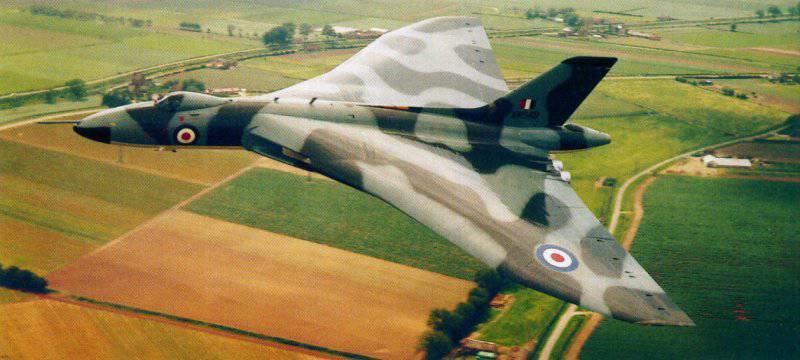
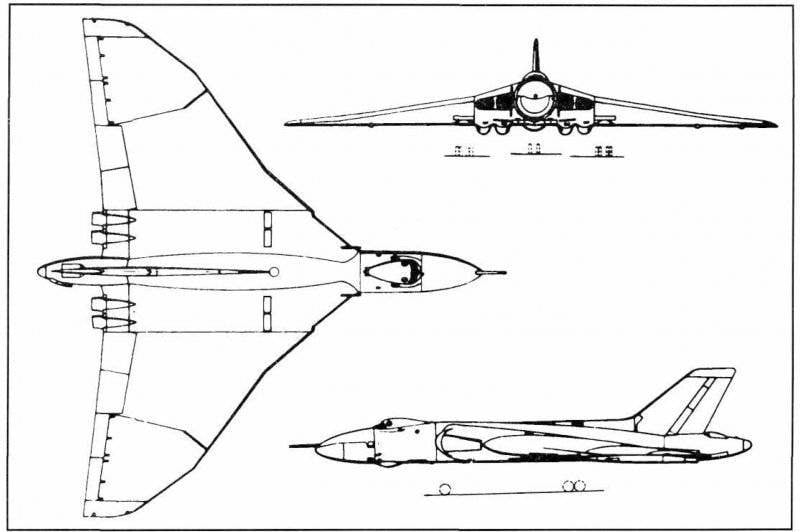
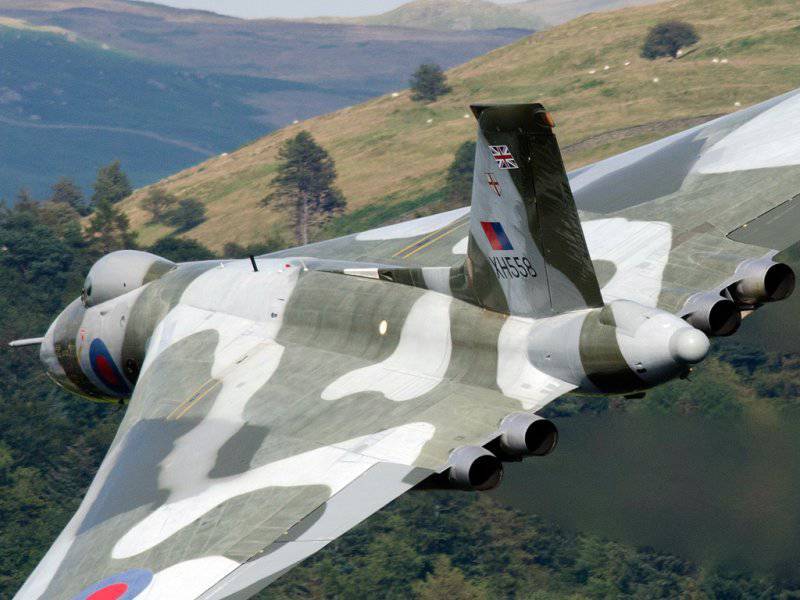
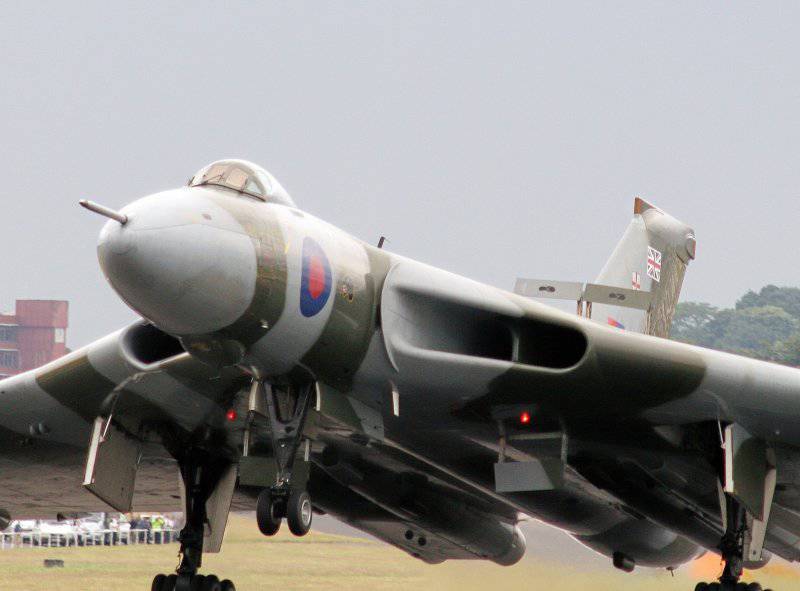
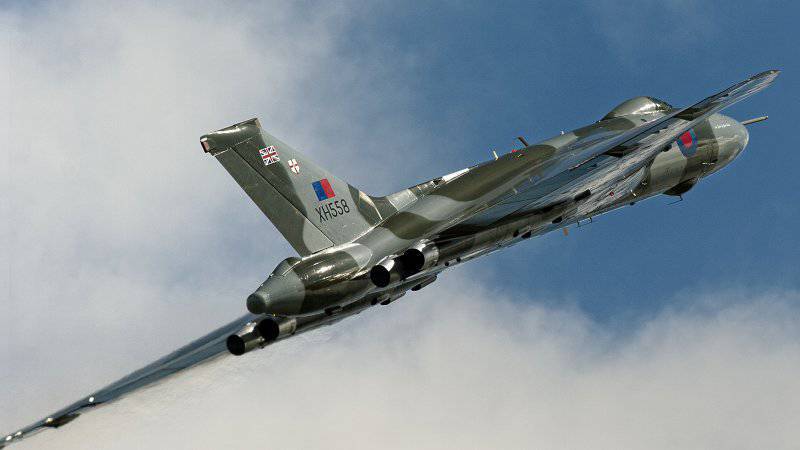
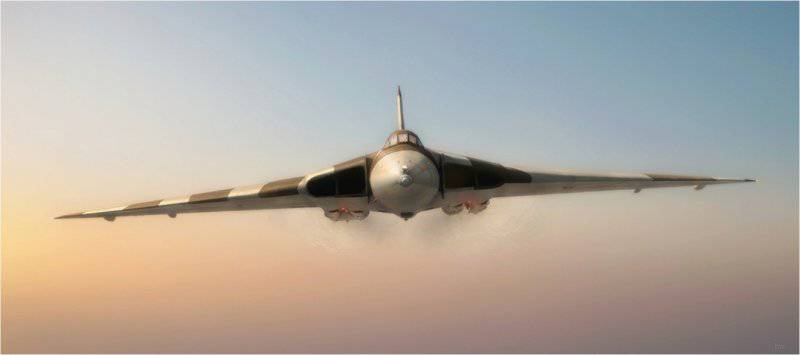
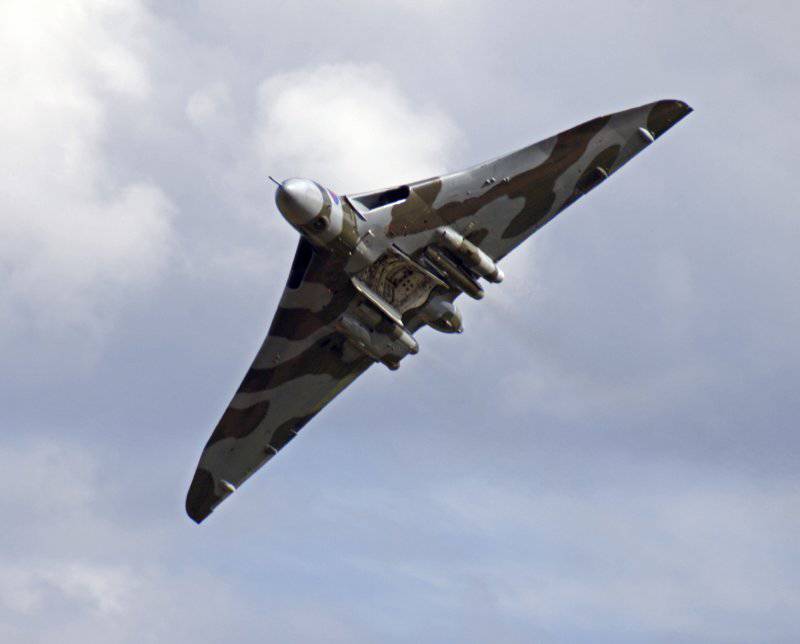
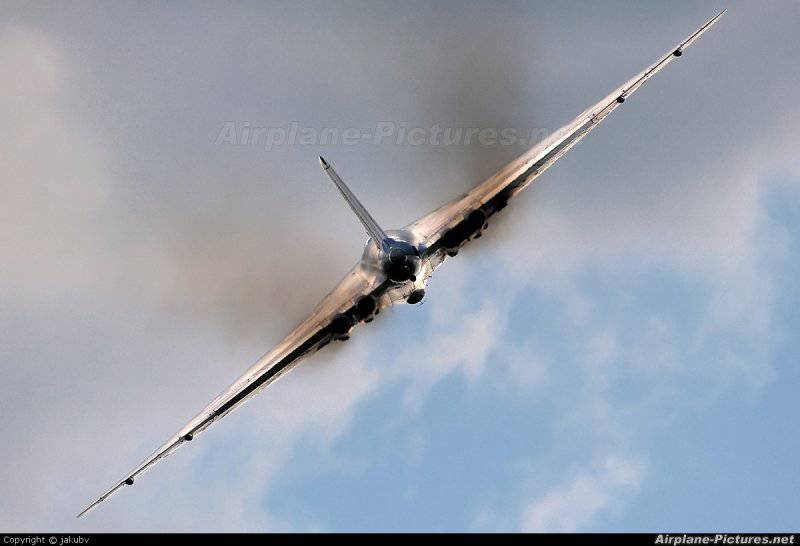
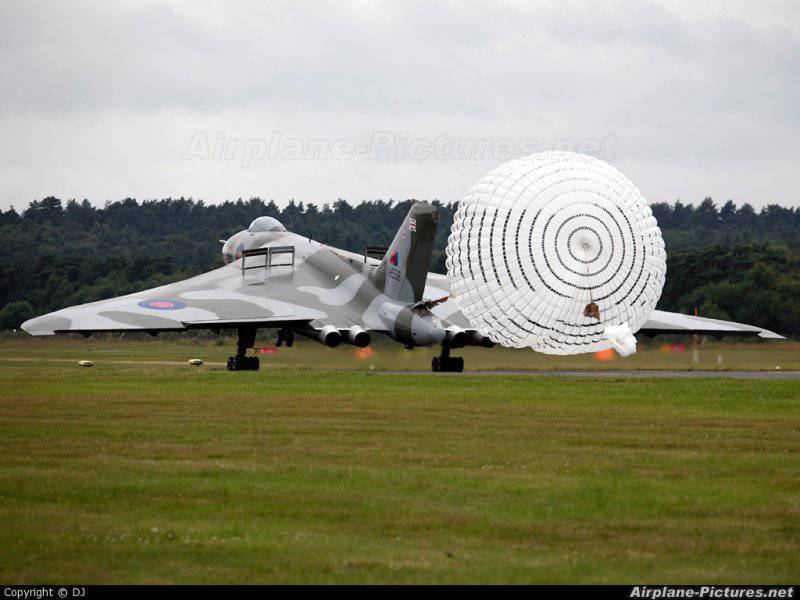
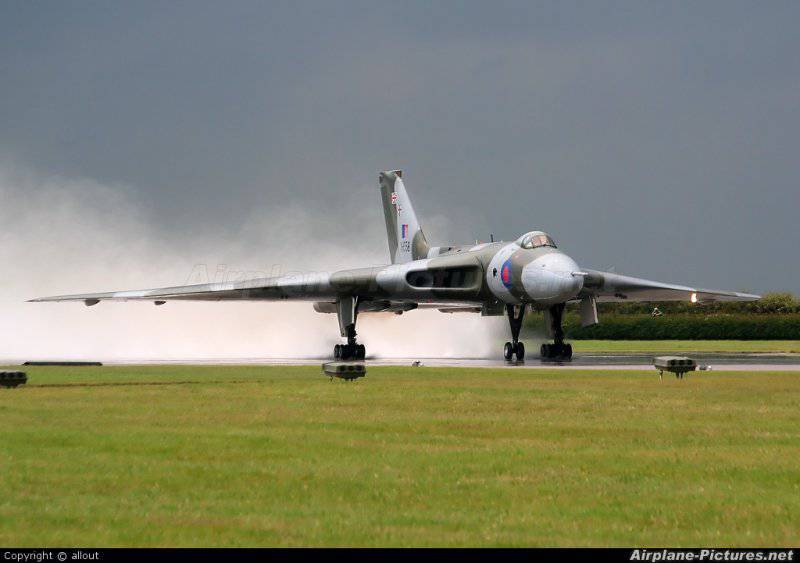
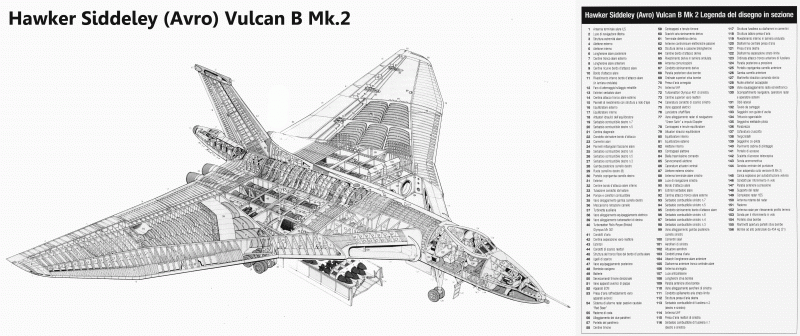

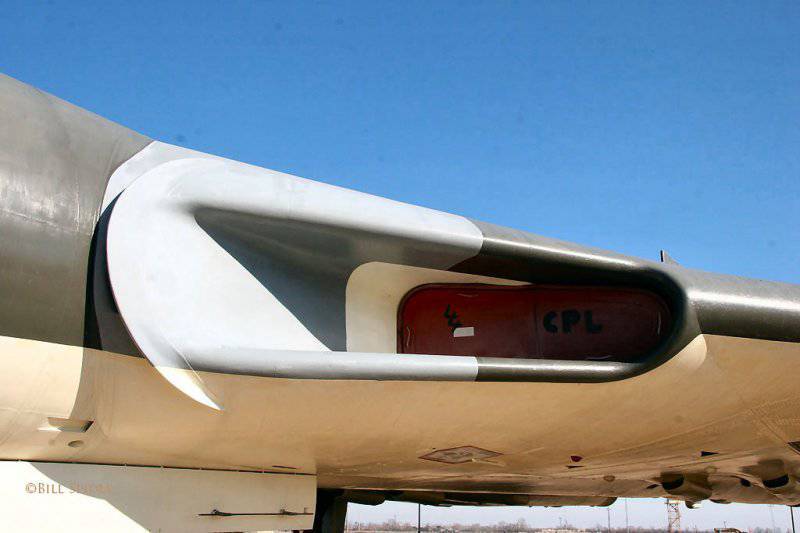
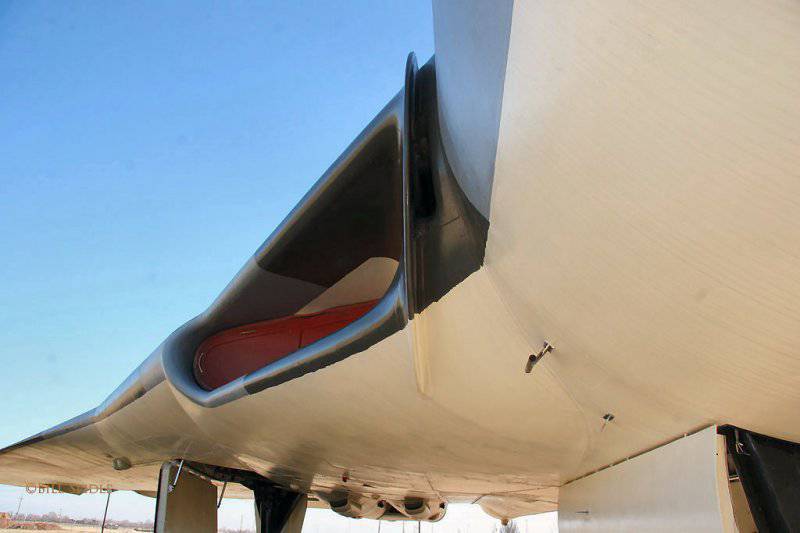
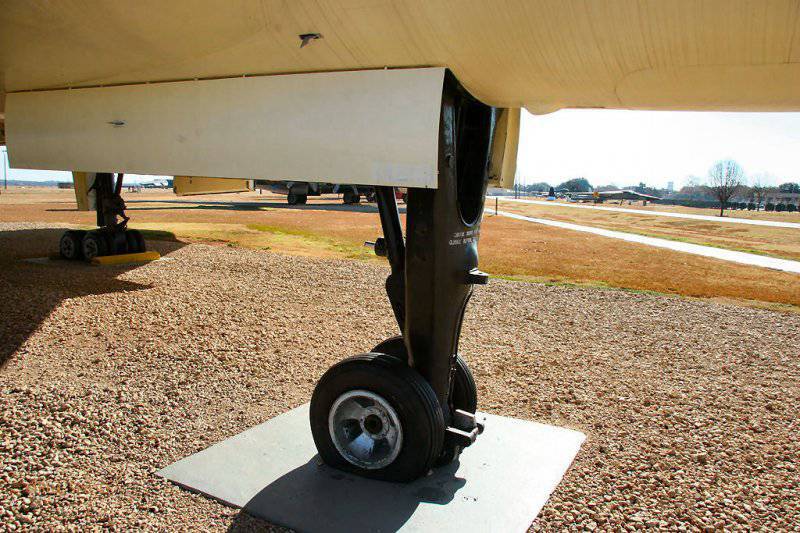
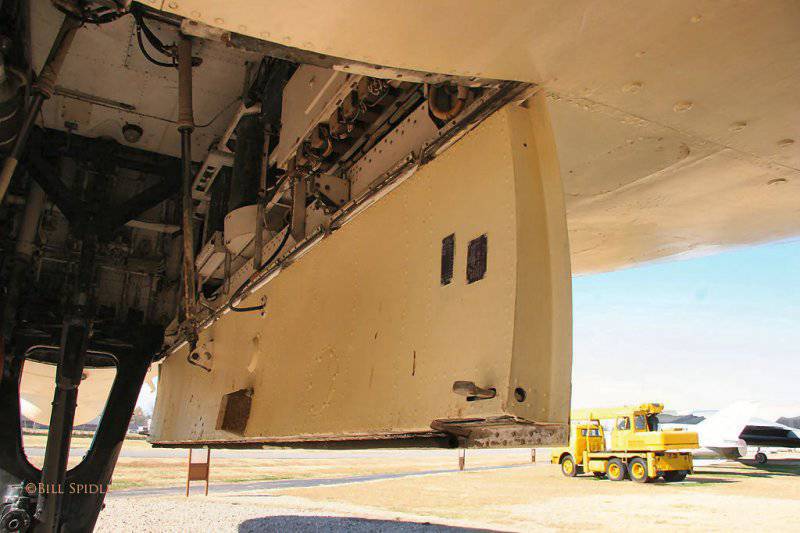
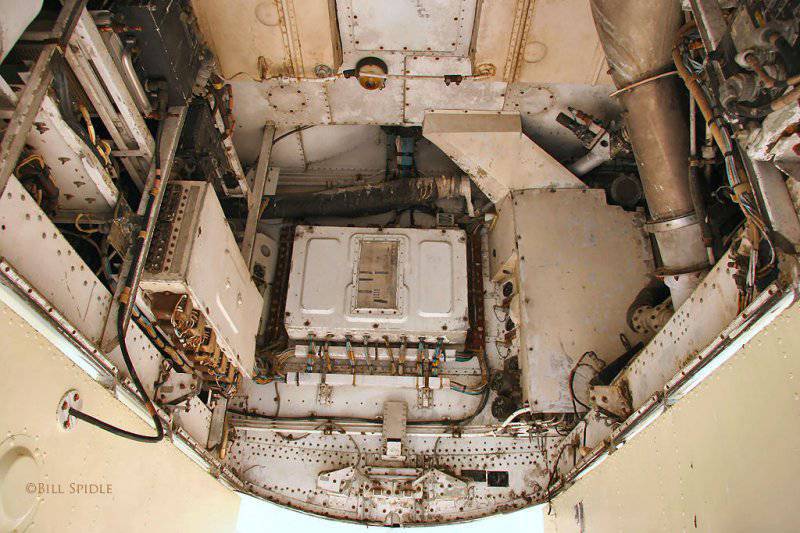
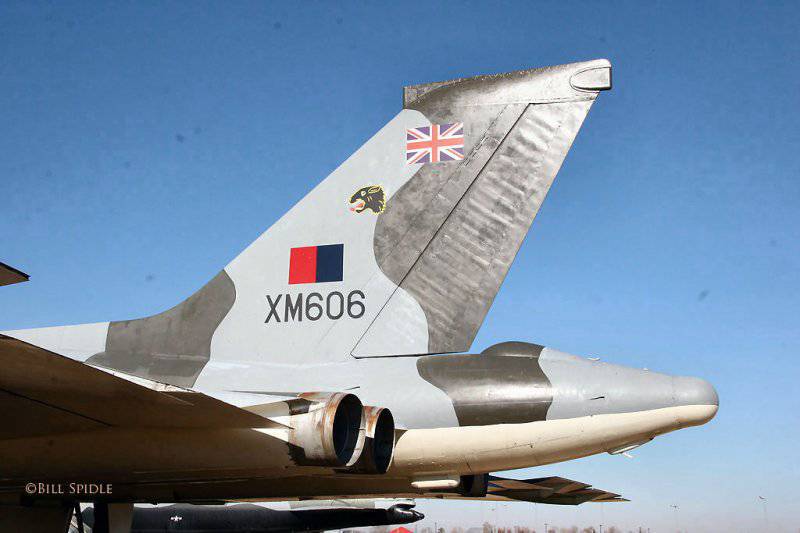
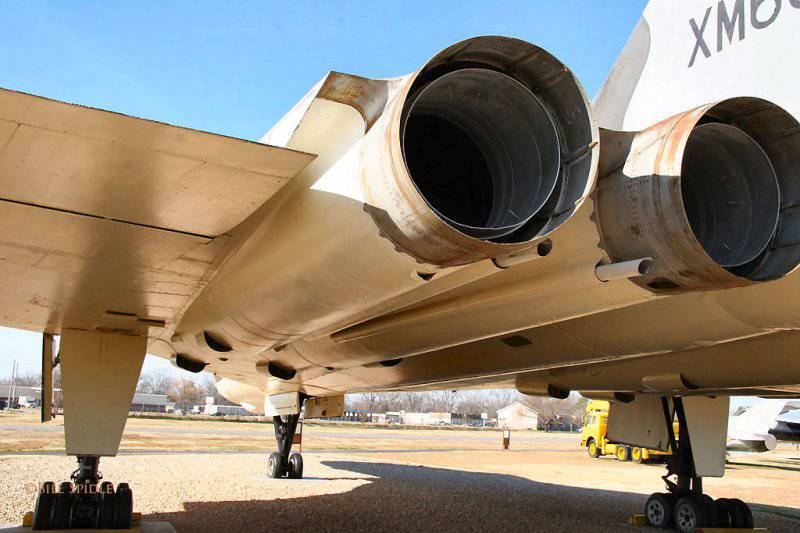
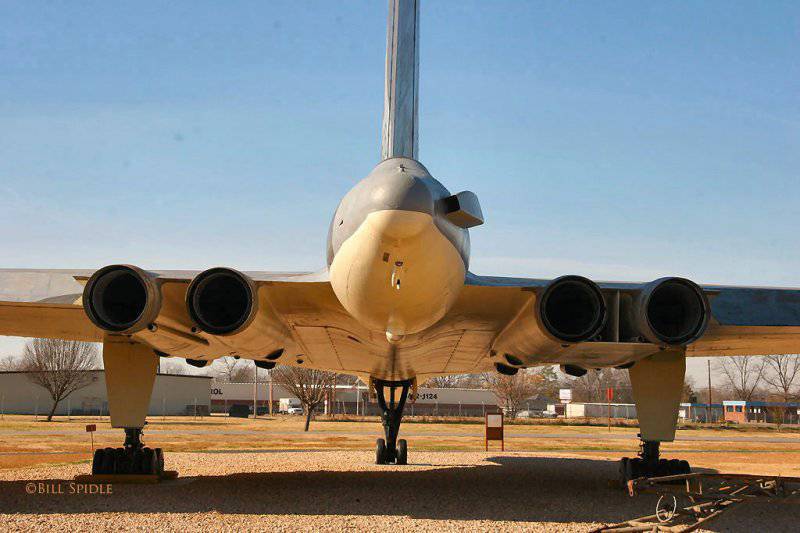
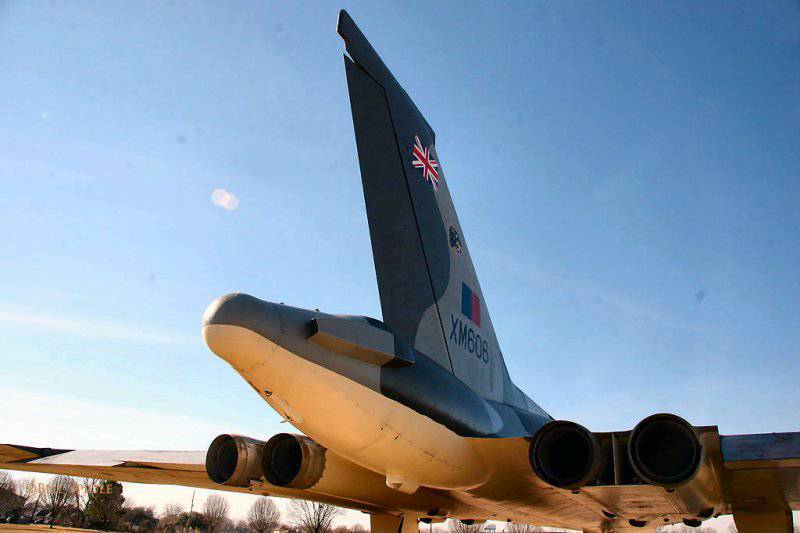
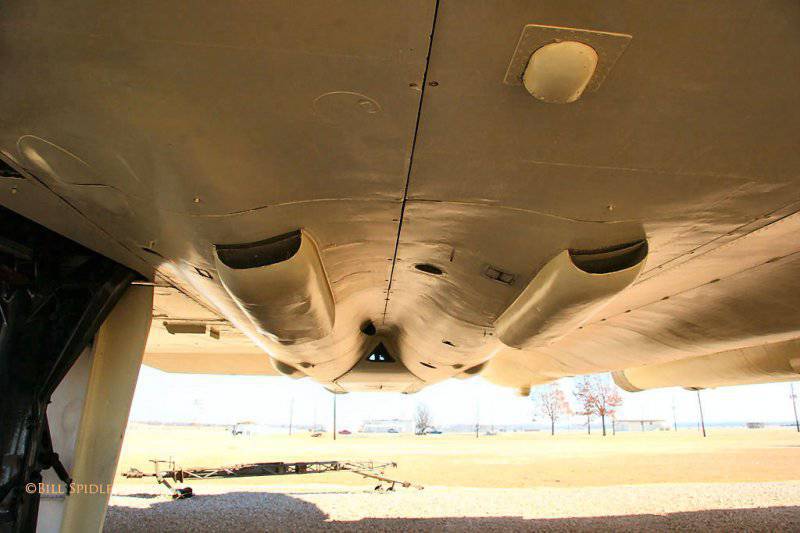
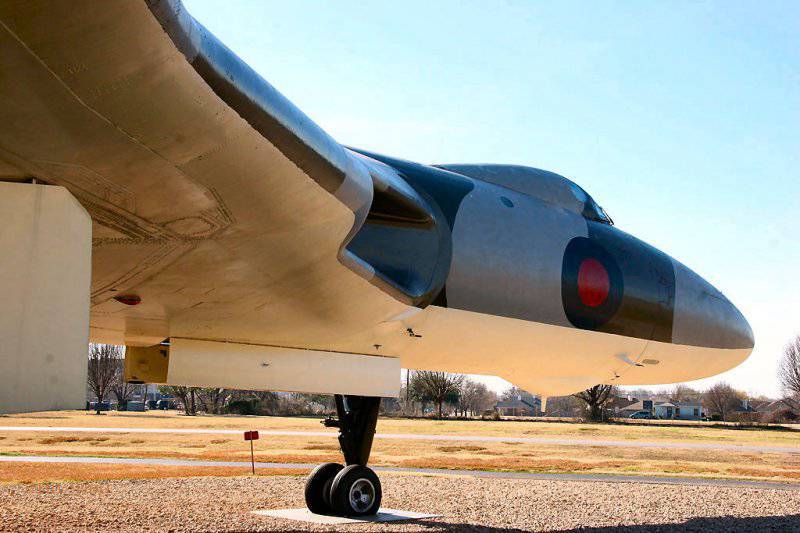
Information